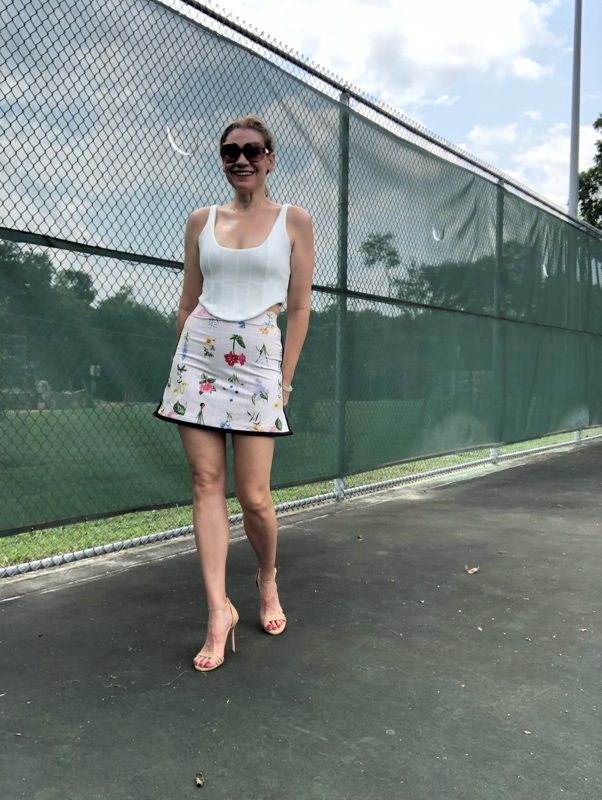Cuthbert Collingwood “Ted” Tinling (23 June 1910 – 23 May 1990), sometimes known as Teddy Tinling, was an English fashion designer, spy and author. He was a firm fixture on the professional tennis tour for over 60 years and is considered the foremost designer of tennis dresses of the 20th century
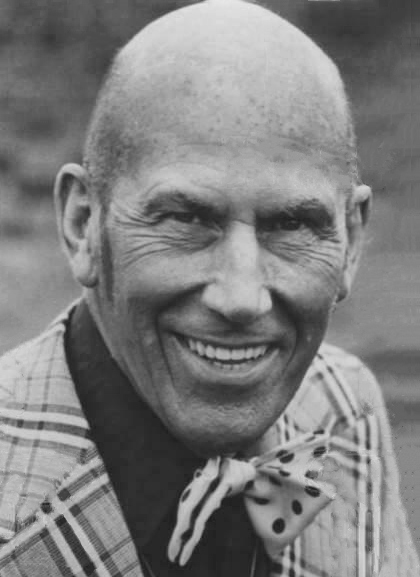
It’s a month where not everything is as it seems- from bumps in the night to ghosts who end up being shadows. So a designer who was also a spy who was also a tennis champion? I can’t resist! Ted Tinling first came to my attention in the movie Battle of the Sexes (about that infamous tennis match with Billie King!) but I completely forgot about him till in passing I read about the tennis designer who was a spy. Fashion and spies being 2 of my most favorite things I had to know more. So, Designer to Know: Ted Tinling!
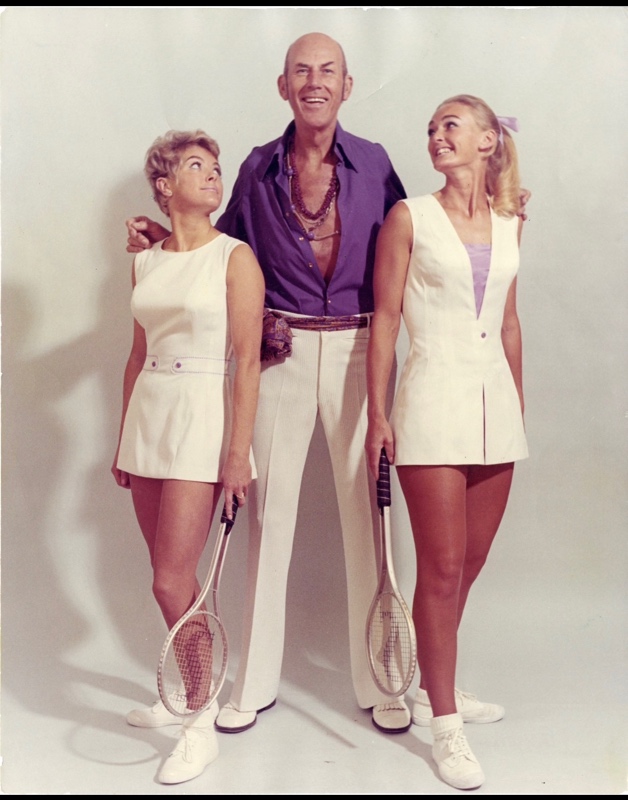
Tinling was born in Eastbourne, on the south coast of England, the son of James Alexander Tinling, a chartered accountant. In 1923, suffering from bronchial asthma, his parents sent him to the French Riviera on doctor’s orders. It was there he began playing tennis, particularly at the Nice Tennis Club where Suzanne Lenglen practiced.
Despite Tinling’s youth, Lenglen’s father asked him if he would umpire one of her upcoming matches. He became her personal umpire for two years in between a short career as a player himself. This friendship with Lenglen led him to his first Wimbledon Championships in 1927, where he became player liaison until 1949. Ted kept a relationship with Wimbledon for years. Tinling’s status at Wimbledon was ever-present, serving as Master of Ceremonies and escorting players onto court for their matches.
Tinling was a brilliant tennis historian, umpire, consultant, confidant, and chief of protocol. He had as distinguished and all-encompassing career as anyone in history. Tinling also became the revered Chief of Protocol for the International Tennis Federation and a Director of International Liaison for the women’s pro tour.
Interesting here? World War II brought a brief career interruption. During the Second World War, he was a Lieutenant-Colonel in the Intelligence Corps in Algiers and Germany. After his death in 1990, it was revealed that Ted Tinling was a spy for the Allies. I’ll be honest I did search after search for details and came up with nothing! I’ll keep looking for all of us!
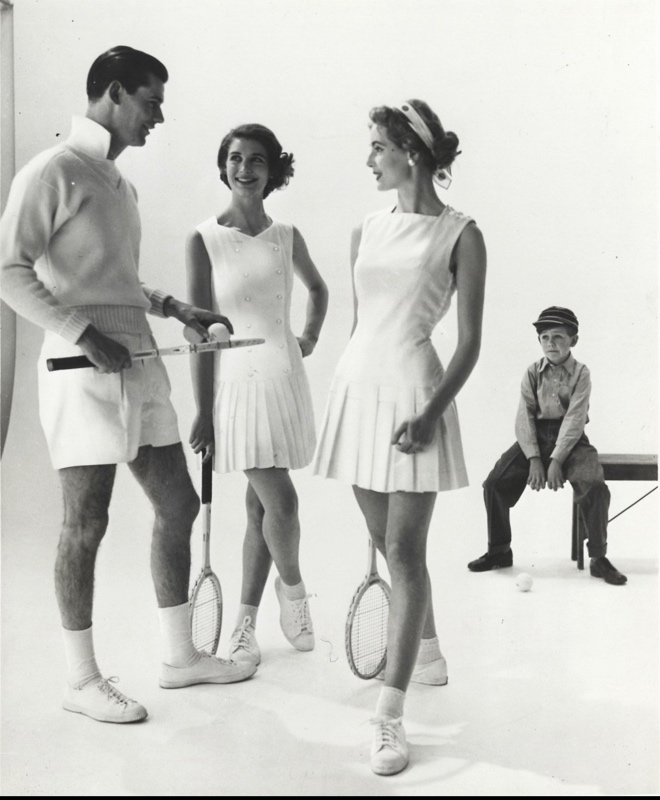
Though he was a tennis champion, design and fashion were always in Ted Tinling’s blood. Ted began sketching designs as a child, and before WWII was working in custom gowns, most famously designing a wedding gown for fellow tennis champ Dorothy Round in 1937. But as the 30s gave way to the 40s Tinling left behind dresses to focus on women’s sportswear, especially Tennis, and he completely changed the way we dress for tennis.
Tinling’s first tennis design was created for Joy Gannon’s 1947 appearance at Wimbledon, for which he incorporated a pink-and-blue hem that sent the All England Club into a state of shock since its rules were — and remain — that a player’s outfit must be predominantly white.
His breakout moment came at 1949’s Wimbledon, for which Tinling added lace trim to the hem of Gussie Moran’s undershorts — creating a scandalous moment that has become tennis legend.This also led to Tinling being banned from Wimbledon for years!
Tinling designed dresses for a slew of the greatest tennis players in history, including Maureen Connolly, Maria Bueno, Billie Jean King, Margaret Court, Evonne Goolagong, and Martina Navratilova, to name a few. His tennis apparel adorned female players throughout the 1950s, 1960s, and 1970s and his dresses were worn by the Wimbledon ladies’ champion in 1959, 1960, 1961, 1964, 1969, 1971, 1972, 1973, 1975, 1977, 1978 and 1979. Perhaps his most famous outfit was displayed by King in her famous Battle of the Sexes tennis match against Bobby Riggs in 1973. It was a menthol-green and sky blue dress with a color scheme that was a tribute to the Virginia Slims women’s tour. “It felt absolutely perfect when I put it on,” King said.
Tinling’s creations were alluring and colorful and revolutionary. They ranged from the Technicolor outfits sported by Bueno to the glittery models worn by King to the black three pieces of Rosie Casals. “Confidence is probably what makes the difference between a victory and a defeat,” Tinling said. “If a woman feels that she is prettier or better dressed than her opponent, nothing can stop her.”
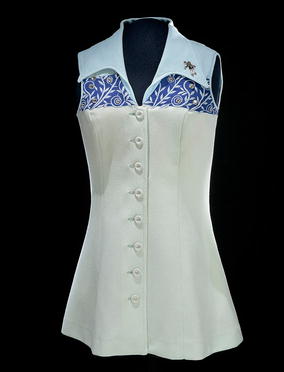
From there, Tinling enjoyed a steady stream of Grand Slam-bound ladies pining for his designs. In the Seventies, he was employed by the Virginia Slims Circuit (an early predecessor to today’s Women’s Tennis Association) to create designs for the tour’s players.
In his career’s later years, the lanky, outspoken and totally bald Tinling shared a close relationship with teenage sensation Tracy Austin, who wore Tinling designs to capture U.S. Open titles in 1979 and 1981.
The two first met in 1977, after Austin won a custom Tinling jacket as part of her prize package for a title in Philadelphia. The two became constant collaborators thereafter, with Tinling even bequeathing Austin his single pearl earring after his death in 1990.
“Ted was a character with stories galore — we had a great relationship,” Austin said. “I was always a very curious young lady, I would ask a million questions about the history, all the champions, and he loved to talk about his craft….He tried to make women understand that they were athletes but tried to make them feel beautiful on the court.”
Austin would commission up to seven dresses at a time, and unlike in today’s tennis world, would wear a different dress in each stage of a tournament. “I would never have thought of wearing the same outfit twice. It’s a different thought process now that they are selling product,” she said. “Now a player will get an outfit and they wear it for an entire tournament, they are getting paid millions of dollars. I paid for every one of those dresses. Not only was I not paid, I was paying for them.”
Side note- all of the players that Tinling dressed paid for his designs. There was no giveaways, no endorsements. Tinling made one of a kind couture for players- and they paid him. He in turn made the stars of the court a form of a fashion show.
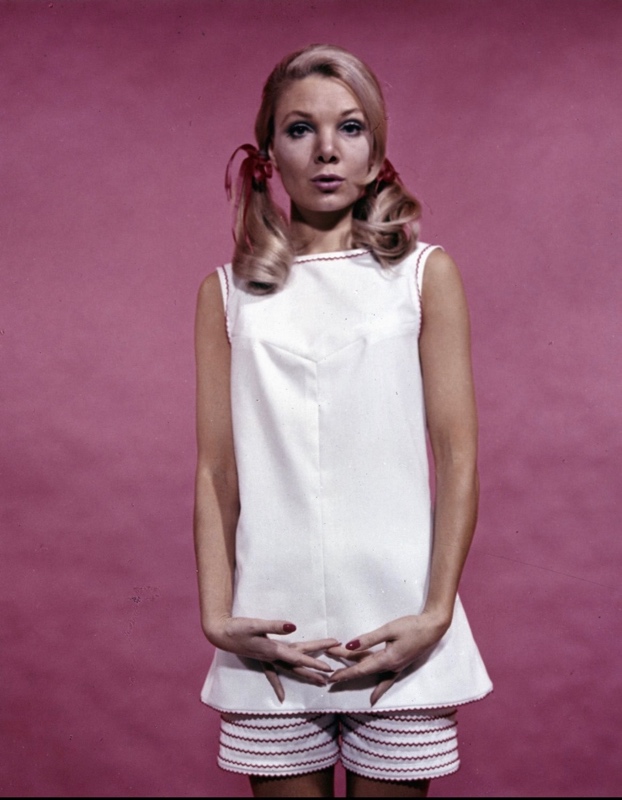
Tinling was a brilliant tennis historian, umpire, consultant, confidant, and chief of protocol. He had as distinguished and all-encompassing career as anyone in history. Tinling also became the revered Chief of Protocol for the International Tennis Federation and a Director of International Liaison for the women’s pro tour.
Tinling authored two books on tennis, the most notable being, Love and Faults: Personalities Who Have Changed the History of Tennis. He was burdened with respiratory problems throughout the 1980s and passed away in May 1990.
Will we ever know all of his spy secrets? Will we ever wear couture for sport again?
I don’t know- but I’m grateful that Ted Tinling came along and showed us all it’s done.
This is just a brief overview of Ted Tinling’s life. So much more can be learned with a quick google search, by reading the books and articles about and by him, or by a dive into the Tennis Archives.
Now, if you’ll excuse me, will I’m not great at Tennis- I might be a fashion of fashion on the court!
